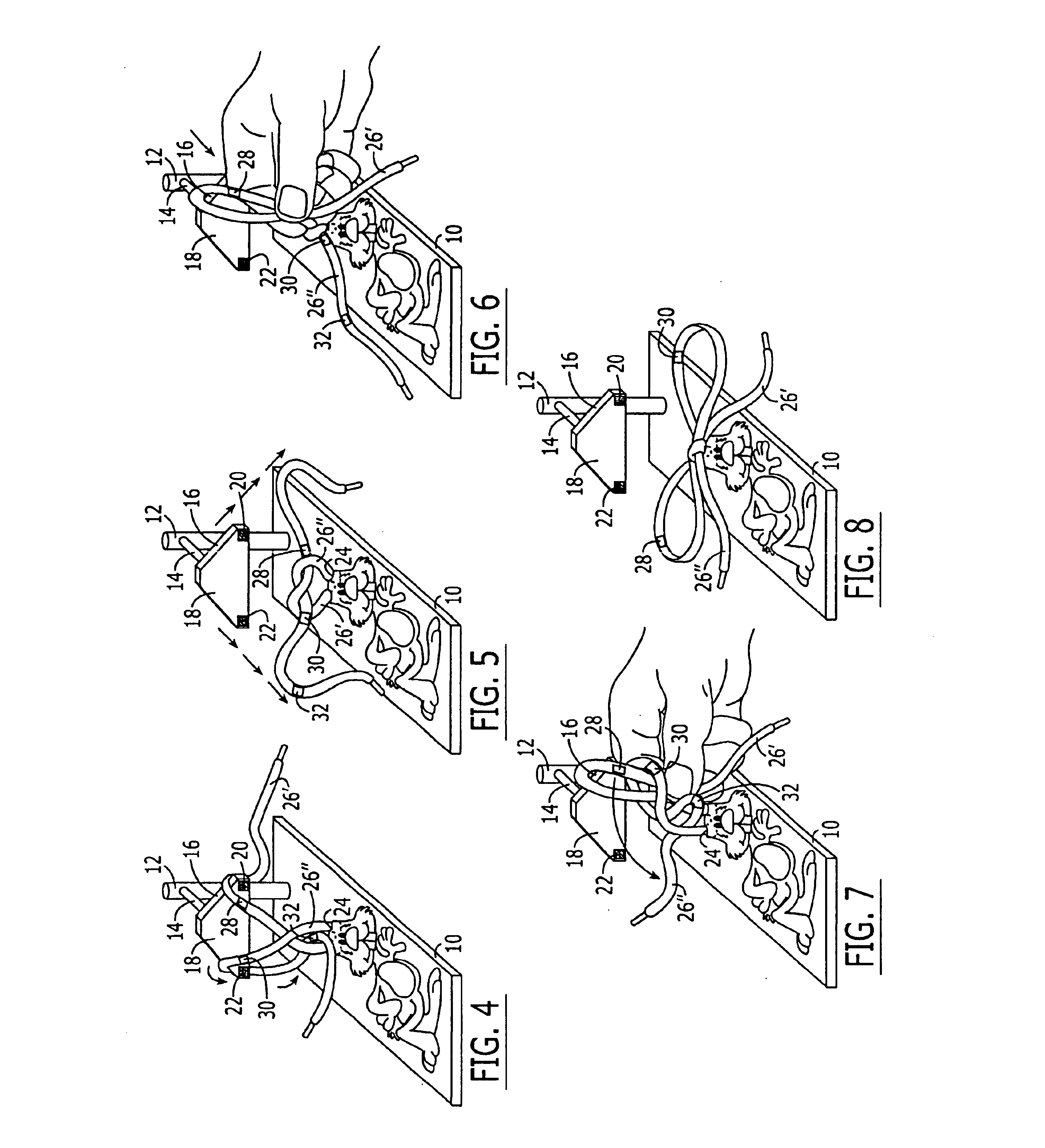Bow tying learning device
a learning device and bow tie technology, applied in the field of bow tie learning devices, can solve the problems of insufficient mechanical devices for physically assisting children in learning how to tie a bow in a shoestring, long time required to teach a child to tie a bow, and inability to solve the problem of general insufficient solutions, etc., to achieve the effect of convenient assembly and disassembly
- Summary
- Abstract
- Description
- Claims
- Application Information
AI Technical Summary
Benefits of technology
Problems solved by technology
Method used
Image
Examples
Embodiment Construction
Looking now in greater detail at the accompanying drawings, the preferred embodiment of the present invention is a device that includes a flat, preferably rectangular, base member 10 that can easily rest on any flat surface, and a post member 12 that is fitted in a hole in the base member 10 so as to extend vertically upwardly from the base member 10. A holding member 16 is mounted at the extending end of a rod 14 that extends horizontally between the post 12 and the holding member 16, whereby the holding member is disposed above the base member 10. The holding member 16 has a vertically extending front face 18 that includes a first securing member 20 mounted on one side thereof, and a second securing member 22 mounted on the other side thereof. The securing members 20 and 22 are preferably a form of Velcro®, but they can be formed of any material that will temporarily hold a string in place during the bow tying procedure which will be discussed in greater detail below. Preferably, ...
PUM
 Login to View More
Login to View More Abstract
Description
Claims
Application Information
 Login to View More
Login to View More - R&D
- Intellectual Property
- Life Sciences
- Materials
- Tech Scout
- Unparalleled Data Quality
- Higher Quality Content
- 60% Fewer Hallucinations
Browse by: Latest US Patents, China's latest patents, Technical Efficacy Thesaurus, Application Domain, Technology Topic, Popular Technical Reports.
© 2025 PatSnap. All rights reserved.Legal|Privacy policy|Modern Slavery Act Transparency Statement|Sitemap|About US| Contact US: help@patsnap.com



